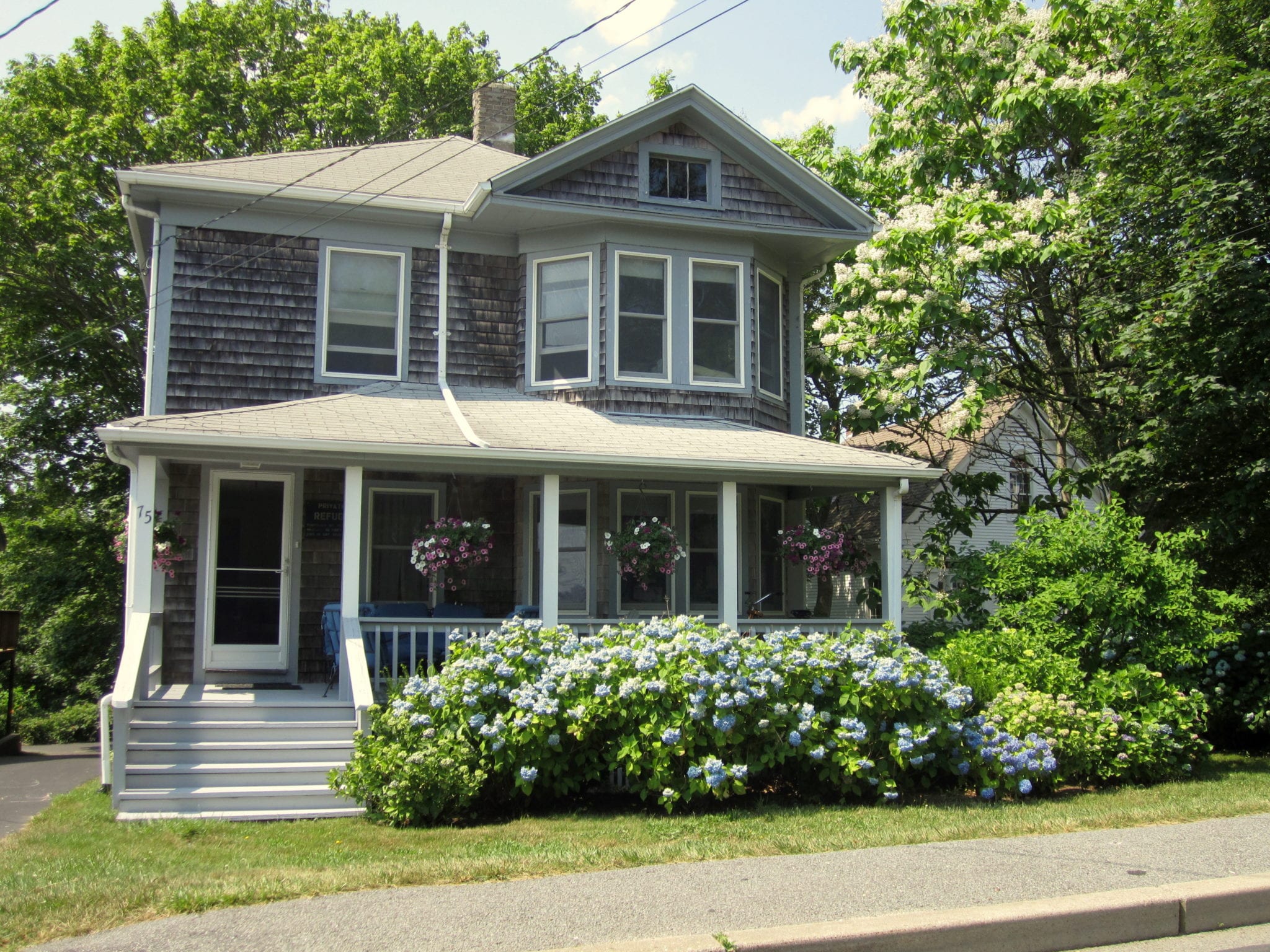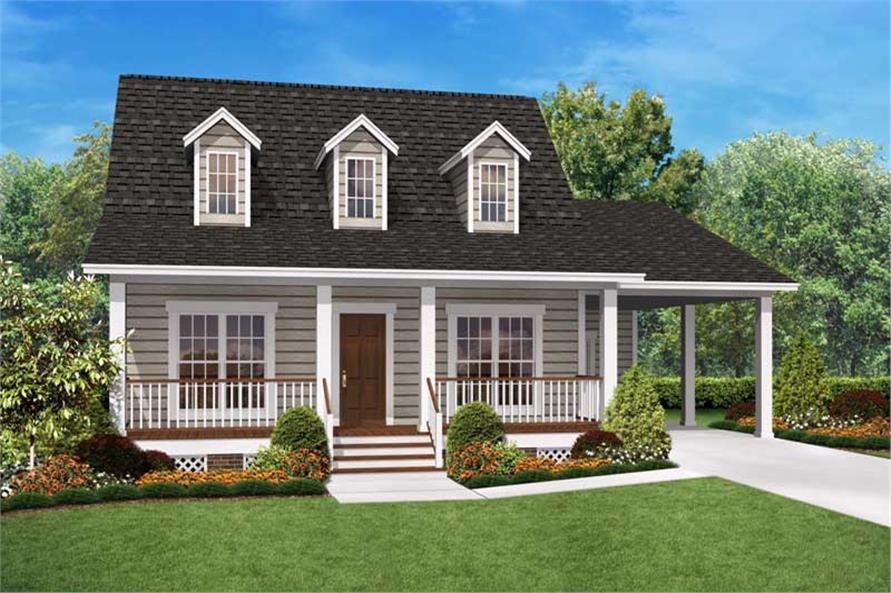Table Of Content

Modern Cape Cod interior design opts for a white color palette to add light to the home and create a larger feel in the space. Unlike Victorian homes popular in the early 20th century, Cape Cod homes are distinguished by their simple architectural designs. Because of their modest geometric forms, Cape Cod houses are particularly well-suited for additions. This Cape Cod home seems very traditional—no dormers, a center chimney, and not even any window shutters.
Cape Cod House Style: Simplicity Meets Timeless Charm
Though traditionally built as a single-story house, today’s Cape Cod-style homes can have multiple floors and additional wings. This home style also features a center-placed front door and shuttered windows on either side. The exterior of the Cape Cod house is commonly clad in cedar shingles but newer homes are also built of brick, stucco, and stone. Window boxes and shutters serve as the primary sources of ornamentation, and black is often used as a popular accent color for doors, shutters, and trims in modern Cape Cod homes. The Cape Cod originated in the early 18th century as early settlers used half-timbered English houses with a hall and parlor as a model, and adapted it to New England's stormy weather and natural resources. Cape house plans are generally one to one-and-a-half story dormered homes featuring steep roofs with side gables and a small overhang.
Cons of Cape Cod-style architecture
They feature similar rectangular floor plans, though they often include at least two stories. Aside from the square footage, colonial homes typically employ gambrel roofs—a main feature of Dutch colonials—while Cape Cod houses traditionally make use of gable roofs. Colonial houses may also include more ornamentation, like the use of columns, which is less common on traditional Cape Cod homes.
Plan: #201-1005
They often feature plush sofas and accent chairs with deep-buttoned cushions. Pine or oak solid wood also gives the home a rustic feel while looking clean and refined. The traditional decor and construction materials give tribute to durability and function. If you’re looking to update your home or give it a complete facelift, here are a few fresh design ideas that can breathe new life into a Cape Cod house. While the traditional layout had rooms separated by walls and doorways to create a closed floor plan, the flow in a modern Cape can be similar to the traditional layout, where all rooms flow toward the kitchen. Craftsman houses are known for detailed interior woodwork, large front porches, and earthy colors.
Tour a Cape Cod Home Designed by Liz Caan - Cape Cod House Tour - Veranda
Tour a Cape Cod Home Designed by Liz Caan - Cape Cod House Tour.
Posted: Mon, 10 Jul 2023 07:00:00 GMT [source]
Capes are perfectly suited to country style.
Here you’ll learn all about this style home, its defining characteristics, advantages and drawbacks as well as the most common types of Cape Cod style Houses. Cost factors you can control include home size, house features and amenities, and finishes. Cost factors that are typically out of your control are things such as labor and materials availability, code requirements, and seasonality. By balancing these two, you can build a beautiful home that fits within your budget.

Or maybe you’re considering building elsewhere but crave quintessential New England charm? The typical Cape Cod house plan is modest in size, rectangular, symmetrical and accommodating to a variety of interior layouts. If you’re going to build a home you plan to stay in for the rest of your life, consider selecting a Cape Cod house plan that features the master suite on the main level, as this will make aging in place far easier. Windows play a big factor in creating the charm and efficiency of Cape Cod house plans. The rest of a Cape Cod style house’s exterior is pretty minimal in terms of ornamentation and usually boasts clapboard siding or wood shingles.
As the home's style progressed through the years, Cape Cod floor plans began to offer more space on the upper level for bedrooms so that heat could rise into the sleeping areas during cold New England winters. Architectural styles similar to the Cape Cod include cottage house plans and New England style home plans. Capes also showcase symmetry, with large, peaked windows — known as dormers — coming out of its staple sloped roof.
Cape Cod homes have an unfinished or partially opened crawl space underneath the house, more commonly lined with stone, brick or brick veneer, as specified. Adding nooks and cranny for storage purposes can really add a serious charm to the house. Meanwhile, in the interiors, the low-heightened ceilings and bold shutters account for heat conservation and blocking of harsh winter winds.
What Are the Different Types of Cape Cod Homes?
While the style of home known as Cape Cod was built as early as the 17th century, the name "Cape Cod house" wasn't used until the 1800s by the president of Yale University during a visit to Cape Cod. While the term itself doesn't have much history, the house's design dates back centuries. Homenish broke down the downsides of owning a Cape house, and they're as minimal as the decor you'd find in one. The rooms are small and a bit boxy, which makes it easy to grow out of for young families. Adding on rooms isn't all that easy, either, since it's so catered to a specific flow and symmetrical feel. Get ready for a hot summer — Cape Cod homes are notorious for poor airflow, so window air conditioner units are a must (and nothing ruins that gorgeous curb appeal more than an AC hanging out front).
In these cases, homeowners have the option to extend the back of the home or add another story for additional space. Most Cape Cod-style homes have a plain front entry with little to no trim or details. Later versions became more decorative, sometimes featuring a small portico. Some also have painted pilasters or, in the case of very elaborate setups, porch columns.
Using natural wood roof shingles and siding on the facade can enhance the look while catching the eye. Also, using a lighter-hued covering can make it look more bigger and brighter. With its off-center door and two windows on the facade instead of four, this mid-19th-century cottage in Marion, Massachusetts, is a classic “half Cape” variation. The Cape Cod house form was first developed in America in the early 18th century. Three centuries later, the style remains as popular as ever—and it's not difficult to see why. With its simple, no-frills shape and cozy, cottage-like aesthetic, the Cape is perhaps the most iconic of all American house forms, evoking a sense of nostalgia unmatched by other styles.
Upon a closer look, in addition to a shed-like front door shelter, rain and snow can be redirected away from the house by gutters and downspouts and window lintels. For the practical New Englander, architectural detail is often for very practical reasons. Though Cape Cod homes are known and loved for their simplicity, they were ultimately designed for colder, snowier climates — right down to their steep roofs.
The style is a simple one — some may call it primitive with a rectangular footprint and gable pitched roof. You will rarely see a porch or decorative embellishments on a traditional Cape Cod home. Low ceilings and a central chimney kept rooms comfortable during cold winters in the northern colonies. The rectangular design made additions and expansions an easy task for growing families.
Although the style faded a bit in popularity, it found a resurgence in the early to mid-1900s when it was called Cape Cod Revival. Even though the styles were separated by about a century, they still share several commonalities, including a conspicuous lack of exterior details. Historically, Cape Cod houses were modestly-sized homes with one to one-and-a-half stories.




















